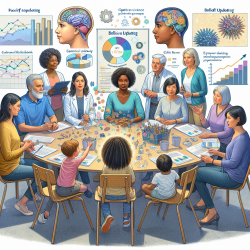Introduction
Otolaryngologic disorders encompass a wide range of conditions affecting the ear, nose, throat, and related structures. For practitioners, understanding these disorders is crucial for providing effective care. The research article titled "Otolaryngologic Disorders" by Elden, Wetmore, and Potsic offers valuable insights into the anatomy, embryology, and examination of these disorders, along with discussions on congenital and acquired conditions. This blog aims to highlight key takeaways from the research and encourage further exploration.
Understanding Ear Anatomy and Disorders
The ear is divided into three main parts: the external ear, middle ear, and inner ear. Each part plays a vital role in hearing and balance. The research delves into the detailed anatomy of the ear, including the auricle, tympanic membrane, and ossicles. Understanding these structures is essential for diagnosing and treating conditions like otitis media, hearing loss, and congenital anomalies.
Key Takeaways for Practitioners
- Anatomy and Embryology: A thorough understanding of ear anatomy and embryology is crucial for diagnosing congenital anomalies such as aural atresia and cochlear dysplasia.
- Examination Techniques: The research emphasizes the importance of using tools like otoscopy and tympanometry for accurate diagnosis.
- Hearing Loss Management: Practitioners should be aware of the different types of hearing loss (conductive, sensorineural, mixed) and appropriate interventions, including hearing aids and cochlear implants.
Encouraging Further Research
While the research provides a comprehensive overview, practitioners are encouraged to delve deeper into specific areas of interest. Attending conferences, participating in webinars, and networking with other professionals can enhance understanding and improve patient outcomes. Additionally, staying updated with the latest publications and guidelines is essential for maintaining best practices.
Conclusion
Otolaryngologic disorders require a nuanced understanding of anatomy, embryology, and examination techniques. By implementing the insights from the research article, practitioners can enhance their diagnostic and treatment skills. For those interested in further exploration, the original research paper offers a wealth of information.
To read the original research paper, please follow this link: Otolaryngologic Disorders.










